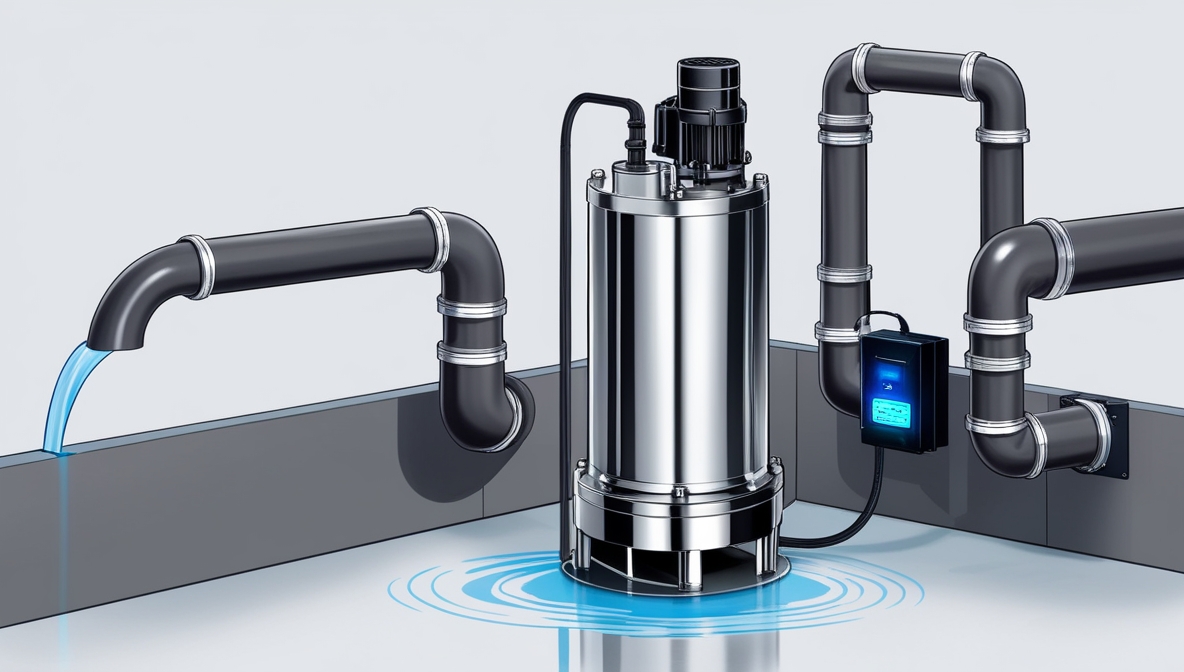Sump pumps are essential devices for keeping your basement dry and protecting your home from water damage. Whether you’re installing a new sump pump, replacing an old one, or looking for a reliable backup system, understanding your options can help you make the best decision. This guide explores everything about sump pumps, including popular models like the Zoeller sump pump and where to find them.
Read about Water Heater Repair here!
What Are Sump Pumps?
A sump pump is a device installed in the lowest part of a home, usually in the basement, to prevent flooding. It collects and redirects water away from your home, ensuring a dry and safe environment.
Types of Sump Pumps
- Primary Sump Pumps
These are standard pumps used in most homes to manage groundwater. They are available in two types:- Submersible: Placed underwater in the sump pit, offering quiet operation.
- Pedestal: Positioned above the sump pit, easier to access for maintenance.
- Backup Sump Pumps
A backup sump pump provides protection during power outages or when the primary pump fails.
Why Are Sump Pumps Important?
- Prevent Basement Flooding
A sump pump in the basement keeps water at bay, protecting your home from costly flood damage. - Reduce Mold and Mildew
By keeping the area dry, sump pumps help prevent the growth of mold and mildew. - Increase Property Value
A well-maintained basement adds value to your property, making sump pumps a wise investment.
Popular Brands: Zoeller Sump Pump
Zoeller is a trusted name in the sump pump industry. Known for their durability and reliability, Zoeller sump pumps are ideal for both residential and commercial use. Their features include:
- Cast iron construction for durability.
- High-performance motors for efficient water removal.
- Models suitable for primary and backup applications.
Putting in a Sump Pump
Installing a sump pump requires careful planning and precision. Here’s a step-by-step overview:
- Determine Placement
Identify the lowest point in your basement where water accumulates. - Dig a Sump Pit
Excavate a hole deep enough to fit the sump pump and pit liner. - Install the Pump
Place the pump in the pit and connect it to the discharge pipe. - Test the System
Fill the pit with water to ensure the pump activates and drains properly.
While some homeowners opt for DIY installation, hiring a professional ensures the job is done correctly and efficiently.
Sump Pump Replacement
If your current sump pump is old or malfunctioning, a replacement may be necessary. Signs you need a sump pump replacement include:
- Frequent cycling or running without pumping water.
- Unusual noises indicating motor or impeller issues.
- Visible rust or damage to the pump.
Replacing a sump pump involves:
- Disconnecting and removing the old unit.
- Installing the new pump in the existing sump pit.
- Reconnecting the discharge pipe and testing the system.
Back Up Sump Pump: Extra Protection
A backup sump pump is a secondary unit that kicks in if the primary pump fails or during a power outage. Types of backup systems include:
- Battery-Powered: Operates independently of electricity, ideal during power outages.
- Water-Powered: Uses your home’s water supply to create suction and remove water.
Maintenance Tips for Sump Pumps
Regular maintenance ensures your sump pump operates efficiently when needed.
- Test the Pump Regularly
Pour water into the sump pit to ensure the pump activates and drains properly. - Clean the Pump and Pit
Remove debris from the pit and clean the pump’s intake screen to prevent clogs. - Check the Discharge Line
Ensure the discharge pipe is free of blockages and extends away from your home’s foundation. - Inspect Backup Systems
Test battery-powered backup pumps and replace batteries as needed.
Benefits of Sump Pumps
- Peace of Mind
A sump pump protects your home from water damage, reducing stress during heavy rains or flooding. - Cost Savings
Preventing water damage saves money on repairs and mold remediation. - Improved Home Environment
Keeping the basement dry ensures a healthier living space, free from dampness and allergens.
Frequently Asked Questions
How often should I replace my sump pump?
Most sump pumps last 7-10 years with proper maintenance. If your pump is nearing this age or showing signs of wear, consider replacing it.
What size sump pump do I need?
The size depends on the amount of water your basement typically collects. A professional can help determine the appropriate capacity.
Are Zoeller sump pumps worth the investment?
Yes, Zoeller sump pumps are known for their reliability, durability, and high performance, making them a popular choice among homeowners.
Conclusion
Sump pumps are a crucial component in protecting your home from water damage. Regular maintenance and timely replacements will keep your sump pump functioning efficiently, providing peace of mind during heavy rains and flooding.
